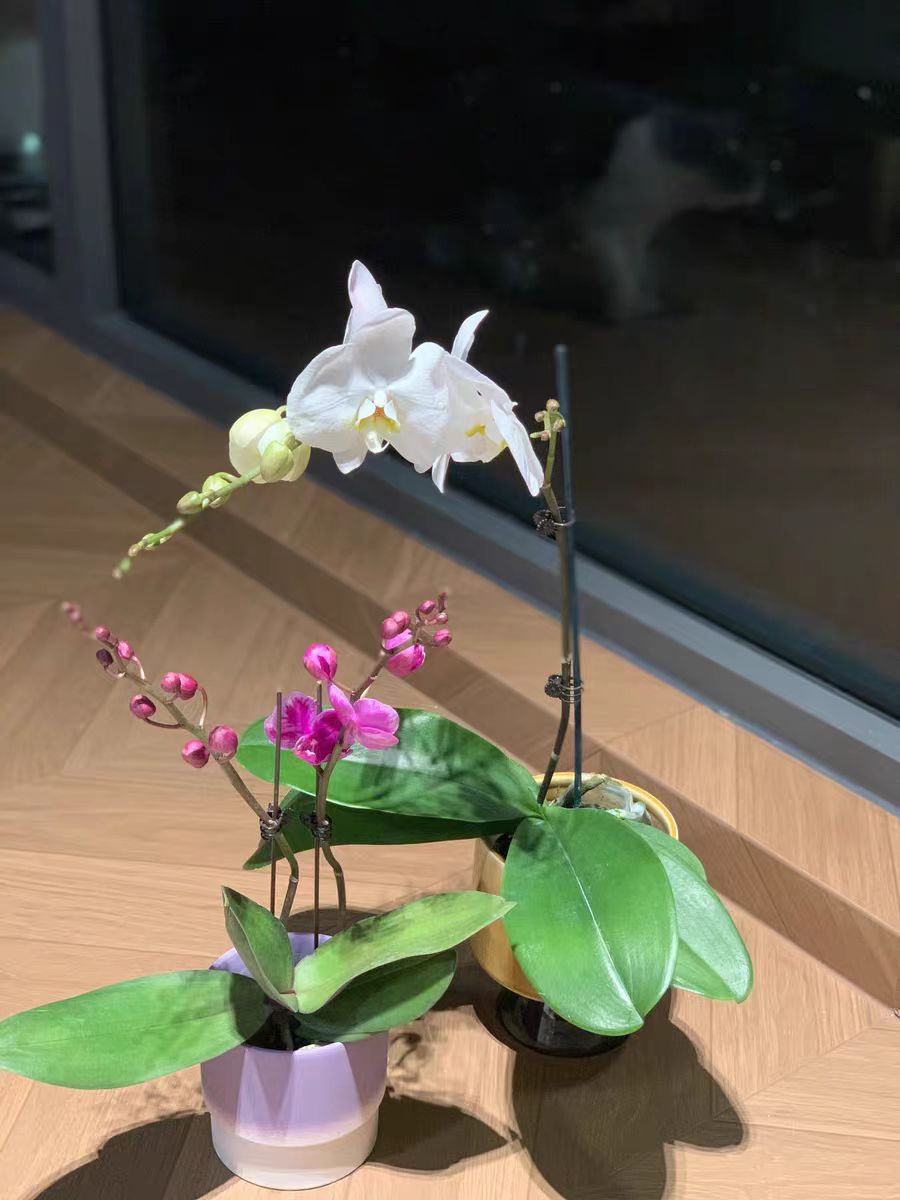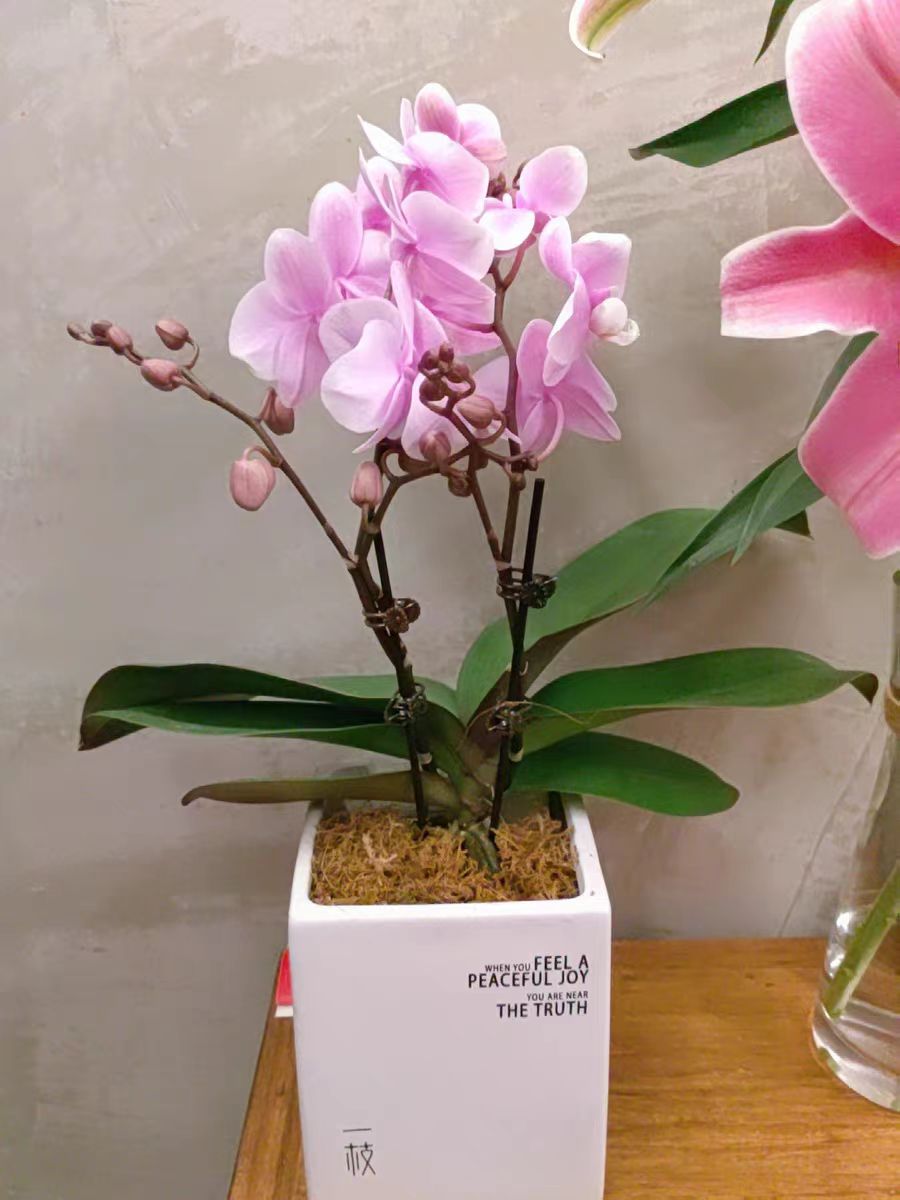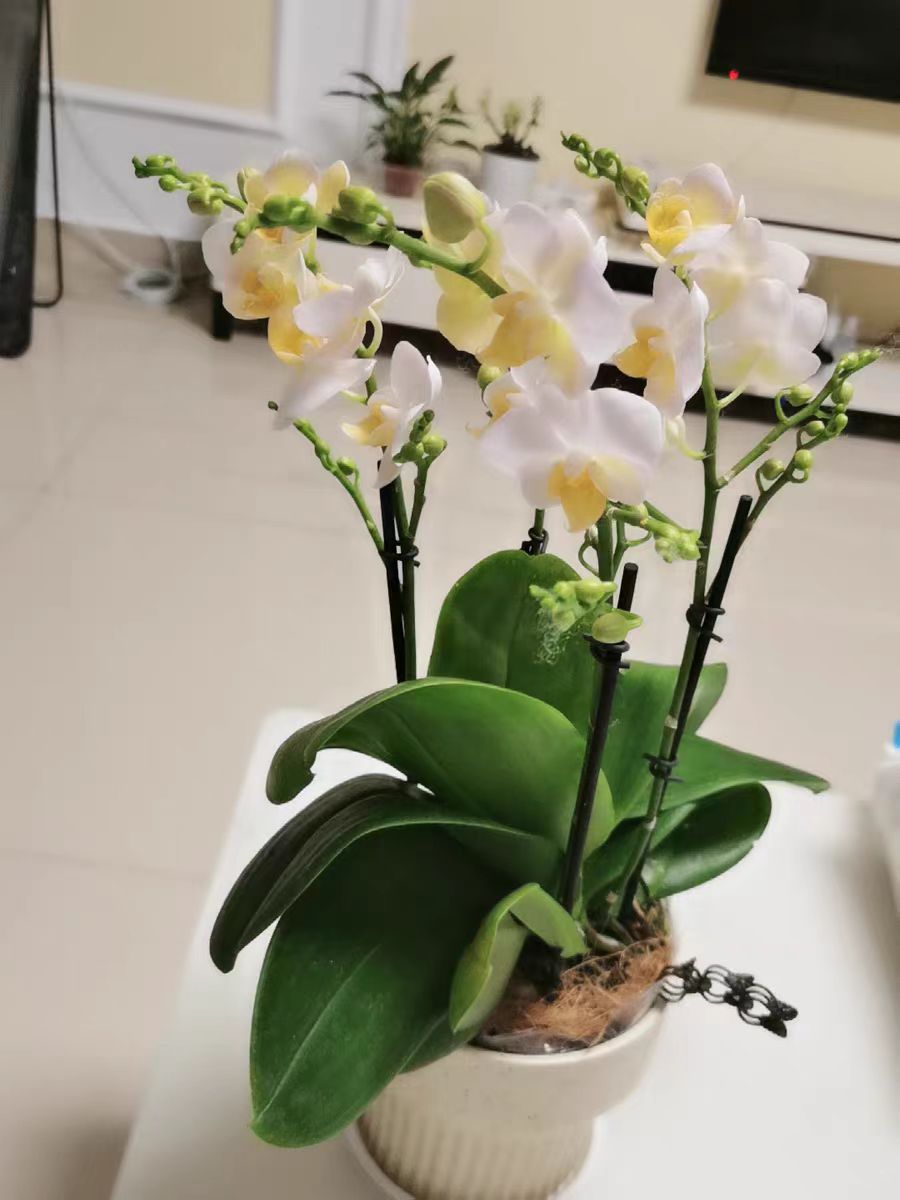For Phalaenopsis, after the flowers fade, the handling of the flower stem becomes an issue that needs attention. So, what should be done with the stem of Phalaenopsis after the flowers have withered? And how should the flower stem be dealt with after the flowering period of Phalaenopsis?
After the flowers of Phalaenopsis wither, the first thing to do is to prune the flower stem. The purpose of pruning is to remove the withered flowers and the wilted flower stem to reduce the consumption of nutrients and maintain the tidiness and health of the plant. When pruning, there are two common methods:
Light Pruning (to Promote Second Bloom): If you hope that the Phalaenopsis can bloom again in the same year, you can choose the method of light pruning. The specific approach is to cut the stem at the 4th to 5th node counting upwards from the base of the flower stem, and retain the bud points. After such pruning, the retained axillary buds may send out flower stalks and bloom again in 2 to 3 months. However, it should be noted that this method may consume a large amount of nutrients of the plant, thus affecting the quality of the flowers in the next year. Therefore, when using this method, it should be ensured that the overall health of the plant is good, and appropriate additional fertilizers should be applied to supplement nutrients.
Heavy Pruning (to Ensure Blooming in the Next Year): If you value more the quality of the flowers of Phalaenopsis in the next year, you can choose the method of heavy pruning. The specific approach is to cut off the flower stem directly from the base. Although there will be no flowers in the short term, this can allow the plant to concentrate its nutrients on nourishing the roots, making the roots stronger. After the roots are strong, the quality of the flowers in the second year will be higher, and the flowers will be more brilliant and eye-catching.
Supplement Nutrients: After pruning the flower stem, the Phalaenopsis will enter a recovery period. During this stage, in order to promote the recovery and reblooming of the plant, it is necessary to supplement nutrients in a timely manner. It is recommended to apply diluted liquid fertilizer 1 to 2 times to ensure that the Phalaenopsis obtains the necessary nutrients. At the same time, when fertilizing, avoid sprinkling the fertilizer directly on the plant. Instead, dissolve it and water it or bury it at the edge of the pot to avoid burning the roots.
Replace the Soil and Pot: During the cultivation of Phalaenopsis, if the roots are found to be rotten or the growth is stagnant, etc., the replacement of the soil and pot should be considered immediately. Replacing the soil can remove the old soil with poor air permeability and provide a more suitable growth environment for Phalaenopsis. Replacing the pot can ensure that the plant has enough growth space and promote the growth of new roots. When replacing the soil and pot, be sure to carefully check the roots and remove any rotten or remaining roots to ensure that the newly planted Phalaenopsis can thrive.
Appropriate Light and Temperature: Phalaenopsis likes a semi-shady environment, so it should be placed in a bright place but avoid direct strong light. At the same time, maintaining an appropriate temperature range is also crucial. The suitable growth temperature for Phalaenopsis is 20°C to 28°C, not lower than 15°C in winter and not higher than 32°C in summer. In an environment with too high or too low temperature, the growth of Phalaenopsis will be affected, and it may even lead to death.
Water Reasonably: Phalaenopsis does not like waterlogging in the soil, so the amount of watering should be controlled appropriately. The watering frequency is usually once a week, but it can be adjusted appropriately according to the humidity and temperature of the environment. When watering, make sure to water after the surface of the sphagnum moss turns white, and there is no water accumulation at the bottom of the pot after thorough watering. At the same time, tap water should be left to stand for 2 days before use to avoid damage to the plant caused by too low water temperature.
Through the handling of the above five aspects, we can effectively solve the problems of what to do with the stem of Phalaenopsis after the flowers have withered and how to deal with the flower stem after the flowering period of Phalaenopsis.
What should be done with the stem of Phalaenopsis after the flowers have withered?

Share with
Tagged in :




Leave a Reply